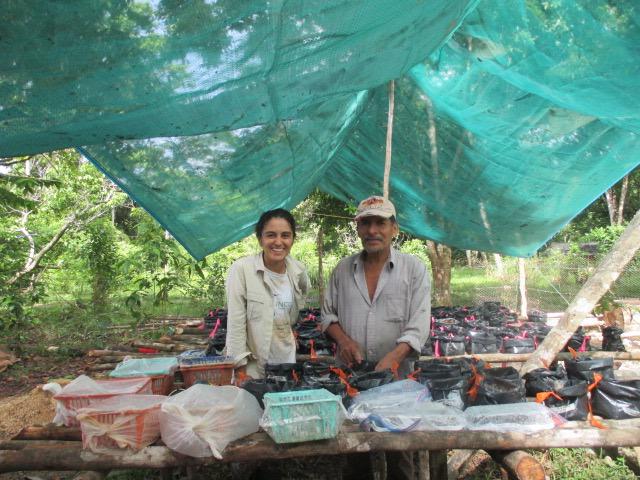Karolina Riaño
To understand the mechanisms related to the invasive success of Pteridium arachnoideum in the region, and develop strategies that avoid invasions and improves forest regeneration.

The Lacandon region comprises the largest tropical rainforest of Mexico. This region is highly deforested and conservation efforts are fighting against agricultural impacts reducing soil quality and promoting biological invasions. Pteridium arachnoideo is one of the most aggressive invasive plants in the Lacandon region. In Mexico and the rest of the world Pteridium sp. is controlled with herbicides and fire. These practices foster invasion by other weeds reducing biodiversity, impoverish the soil and generate greenhouse gas emissions. Manual leaf removal and artificial shading are lower impact techniques that have also been employed for fern control but require hard labor and time. However, most control practices succeed only for a few months because the fern sprouts from the rhizome, which is highly tolerant to all treatments and is the main responsible for its invasive success. The long-term goal of this project is to go from theory to practice and generate a solution to fern invasions. We are especially interested in:
1) Understanding the plant’s physiological mechanisms and how it interacts with the soil,
2) Identifying, together with the local people and farmers, the paths that lead or increase the vulnerability to invasion
3) Co-designing, based on the knowledge generated, new management alternatives for fern-invasion control and forest regeneration and restoration that land owners consider feasible and are willing to adopt.